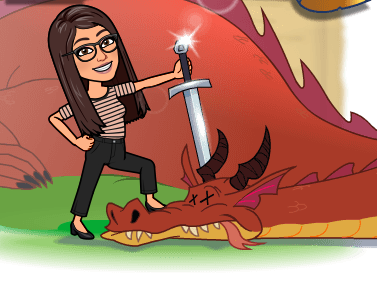Let's go on a WEBquest!
"I hear and I forget. I see and I remember.
I do and I understand."
— Confucius
It is possible to integrate the principles of constructivist learning, project teaching methodology and web browsing to develop the curriculum in school.
Even more, now that online learning is gaining so much space in the lives of the students.
The tool is called WebQuest; it means inquiry, investigation through the web.
Originally developed in the mid-1990s by Bernie Dodge (University of San Diego) and developed by Tom March. The WebQuest uses the Internet to practice cooperative learning in a more effective way. The structure of this resource is based on constructivism and therefore forces students to transform information into knowledge and really understand it, using real-world and authentic tasks to motivate students.
The cooperative learning strategies required in a Webquest, help students to develop skills and contribute to the final product of the group.
Ok, but what is it really?
It is indeed, a quest! It is like an FBI folder or a "Scape Room" game. It contains some information and steps for the students to conduct investigations. In the end, children will have to come up with a conclusion, solve a problem or produce something that was stipulated in the beginning. In order to do that, children will be given a series of steps and tools that follow a didactic structure that will help students to build knowledge on what they are investigating.
A WebQuest is like a website, but a very simple one. In order to build it, the teacher will fill the blanks following the structure given by the host website and at the end, it will generate the Webquest we'll share with students.
The six stages of a WebQuest
Developed by Dr. Bernie Dodge at San Diego State University in 1995, a typical WebQuest should have 6 common stages:
1.Introduction: Start with some background information about your lesson. It will guide students to the beginning of the process of inquiry. It could be a video, a song, a piece of media or newspaper article, even a storybook. It all depends on the age and topic you are working with.
2.Task: In this section, you’ll give students a mission, related to the previous. It’s the goal of your quest. In most cases, it’s a single question that requires students to analyze information or a final task where they have to produce something.
3.Process: Describe the steps students should go through to accomplish the task. For every step, you can provide weblinks and/or general resources that are relevant and helpful. The more interactive the better! Like embedded widgets and different kinds of media, resulting in a much richer and more modern learning experience that would be able to reach all kinds of learners.
4.Resources: Here is where you list the relevant sites, images, videos, maps, and documents students can use during their quest. This often makes or breaks an interesting WebQuest, so make sure that you spend enough time brainstorming and collecting great resources.
5.Evaluation: In many cases you’ll want to evaluate and grade the work of your students, so this section should outline the criteria. The standards should be fair, clear, consistent, and specific to the given tasks. It’s important to set clear goals, matching assessments to specific tasks, and involve the learners in the process of evaluation. Above all, make sure the evaluation criteria are easy for students to understand.
A great way to make it clear to students and families is to use a Rubric in this section.
6.Conclusion: This is the most important part of a WebQuest. Here, students can reflect on their work. “What have I learned? What went well? Where did I struggle?”
The teacher also summarizes the lesson or can ask for feedback from students.
There are many WebQuests creators around the internet. The one I like to use is in Spanish, and it's called WebQuest Creator 2 (this website charges €6 for life). I have used it before to create a great Quest to some 6 graders about journalistic texts. You can see it at this link. It is a historical and cultural research about the history of one of the neighborhoods of the city I lived in at the time, La Coruña.
A simpler way of preparing a WebQuest is in Google Slides. You can see an example on this LINK and get a template HERE for free!
A simpler way of preparing a WebQuest is in Google Slides. You can see an example on this LINK and get a template HERE for free!
It was developed along with Adeline Pacitto, a fellow researcher for a Master's Degree project at La Coruña University.
FOR KINDERGARTEN
As we can see, it is not really a resource we would automatically consider when teaching kindergarten right? WRONG!!
There is a simpler way of presenting it, it is called MiniQuest. It will have only "Scenario" (Introduction), "Task", "Product" and "Evaluation".
When building it, we can use a lot of images, videos, and other visual resources to build the comprehension of little ones. Also, it is a task in which they may have some help with the reading, just like any other homework, but of course you can also record your own voice and place it in the document...
RESOURCES ONLINE
 MiniQuests for Kindergarten:
MiniQuests for Kindergarten:
Introduction to Growth Mindset (using Webquest Creator)
Learning about Shapes (using Google Slides)
Template to create MiniWebQuests
Introduction to Growth Mindset (using Webquest Creator)
Learning about Shapes (using Google Slides)
Template to create MiniWebQuests
EXTERNAL LINKS TO READ MORE ABOUT THE SUBJECT

